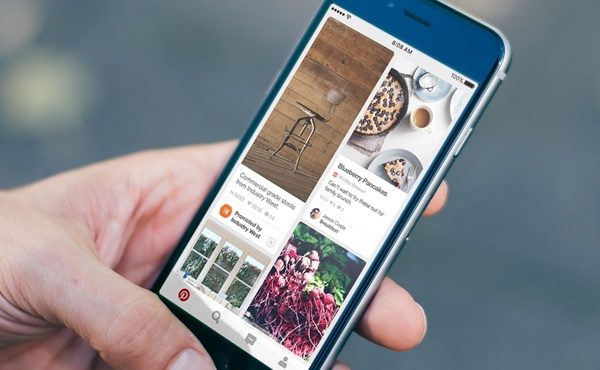Pinterest is the visual discovery engine you use to find ideas for your life including dinner recipes, home and style inspiration, and more. More than 200 million people around the world use Pinterest each month to plan their lives―they may not know exactly what they’re looking for, but they know it when they see it. In Australia, users on Pinterest have increased by 30 per cent over the past year and more than 2.2 million ideas are saved by Australians on the platform each day.
With over 100 billion ideas to explore, Pinterest helps people discover and take action on ideas that are meaningful for them. And, because 75 per cent of all of the content saved to Pinterest comes from businesses, brands play a huge role in the discovery process.
Because Pinterest users have a high degree of intent and are actively considering ideas as they search for inspiration, brands and tastemakers are able to connect with people who are genuinely interested in their content and products. Pinterest’s advertising solutions enable businesses to capture this unique intent and deliver results, whether it’s driving reach, awareness or action.
Pinterest can help businesses:
• Tell their brand story
• Engage with consumers across the entire customer journey from inspiration to action
• Drive key business results including awareness, customer acquisition and retention
There are over one million businesses on Pinterest and it has never been easier to get started.
1 Add the save button to your website (mobile and desktop), making it easy for your customers to save your products and content to their boards on Pinterest.
2 Set up your profile—this is easy to do, you just need a profile photo (this could be your logo or a visual of your products or services), a business description with your web address, contact details and location. If you already have a personal account, it’s easy to convert it into a business account, which is definitely better for marketing purposes as it comes with extra features, like Pinterest Analytics and Pinterest ads.
3 Set up your boards―your boards allow you to save and organise your Pins. You can craft your boards to categorise your Pins by product, by topic, by audience segment, as suits your business. One or two boards is definitely enough to get going, but there is no such thing as too many boards.

4 Add Pins to your boards―great Pins need to be visually appealing, clear and relevant, with helpful descriptions. Top creative tips include:
• Go vertical: your Pins should always be vertical
• Detailed descriptions: detailed, positive descriptions give people the information they need to decide whether a Pin is for them. They also include keywords that make the Pin more likely to show up in search results.
• Instructions and how-tos: step-by-step instructions and other tutorials help break down complicated projects and make it easier for people to bring their ideas to life. Sometimes this comes by way of actual step-by-step images and other times the description just tells you how to do it or lets you know that you can click through to get the full tutorial.
• Lists: curated lists are very popular on Pinterest because they cut out some of the work in searching for the perfect tips, products and more. For example, ‘10 makeup tips every woman should know’.
• Text overlays: text overlays can give people a clear takeaway at a quick glance, especially when a Pin’s purpose isn’t obvious from just the image. Minimise the amount of text in an image, though, and if it’s there, make it part of the design. Be sure all the text is large enough to read easily on mobile or in a grid view. Make sure your Pins don’t look like banner ads―avoid borders and blocks of logos/text.
• Be consistent: reinforce brand recognition, using consistent colours and styling. Use Rich Pins whenever possible so your brand stays on the Pin, as it gets saved by other people on Pinterest.
5 Check your analytics―use Pinterest Analytics to provide insights about what’s working best, so you can refine your strategy to achieve the best performance.
6 Promote your Pins―promoted Pins allow you to pay to get your best Pins shown to the most relevant target audience for your business on Pinterest. It is a highly cost-efficient way to build awareness of your brand and drive sales.
Online furniture and homewares retailer MADE.COM created a Pinterest profile not long after it launched in 2010, as they knew this platform would connect them with an audience looking for help renovating rooms and decorating new apartments.
“With home decor being one of the biggest categories of content on Pinterest, it allows us to talk to people when they’re in this planning phase,” says Annabel Kilner, commercial director, in a statement as past of a Pinterest case study.
When they started using Pinterest, MADE.COM created boards with popular design trends. Today, Pinterest has become a vital piece of MADE.COM’s growth strategy—they’ve expanded their content and integrated Pinterest into all other channels and platforms.
By ramping up their Pinterest presence with Rich Pins and a diverse set of content, MADE.COM has seen dramatic results in just a few months: 36 per cent increase in traffic to their site; 51 per cent increase in conversions; 106 per cent increase in transactions; and 173 per cent increase in revenue.
“From Pinterest Analytics we’re able to see what other interests our audience has. We use these insights when developing wider content ideas that’ll be of interest to our audience in other marketing channels.”
https://business.pinterest.com/en-gb/get-started-how-to-use-pinterest







